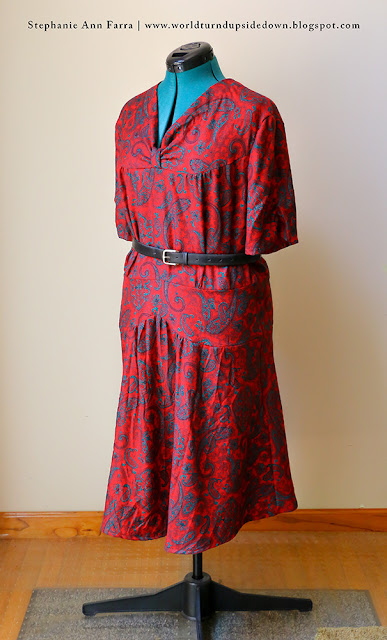I have been doing a lot of sewing recently. A few months ago I ran downstairs to grab a petticoat and became shamefully aware of the amount of reenacting stuff I have. I'm not like other reenactors. My reenacting stuff is in bins in the basement. There is no rhyme or reason. My 18th century petticoats consort with my Civil War shawls. Corsets with pockets. And I'm pretty sure my socks like to part ways and curl up in the darkest interstices of the basement.
Grimacing, I admitted to myself it was probably time to go through everything and get rid of what I didn't need and replace what needed replacing. That was a terribly long list. So long, in fact, I decided to put it off entirely and move on to the bins that held my fabric stash.
I had not been sewing much at the time. All 3 of my sewing machines had some sort of issue and got left at the wayside when I started hand sewing for 18th century garments. A tiny, but very important screw in my main machine was lost by my sister, who promptly got her own machine and left mine broken in the closet. :) My 1912 White treadle machine snapped a belt very early in its life with me and my 1943 Singer never sewed a stitch since I got it, although the light works.
I thought I might as well get rid of a lot of my stash as realistically I should use those bins for reenacting stuff. But as I was going through the stash, I remembered exactly why each piece made its way in there in the first place: they were awesome. I sold some of them, gave some away and decided that what I keep gets used up this year or it goes. This, in conjunction with my machine being fixed for work, has me using my waking free moments sewing mostly historical garments.
To conclude, I have no space for reenacting stuff so I am turning all of my fabric stash into more reenacting stuff. Oh wait. I am a normal reenactor. Whew.
I made this dress out of the Simplicity 1587 pattern and a vintage paisley fabric that I have been waiting forever to wear. It was a little busy for anything modern but was perfect for this 1940s dress. The pattern went together quickly and I only had trouble with the pleats on the the yoke as the markings were a little confusing. If you are making a dress from this pattern, there is a more detailed breakdown on Seam Racer.
I bought this fabric years ago at a thrift store and the pattern was only $1 thanks to the Joann's pattern sales so with thread and a zipper, the project came out at just under $10 and took about a week to make.

To see more versions of this dress:
Lilacs and Lace
CC's Creative Concepts
Dolly Creates
Anita Boeira













































